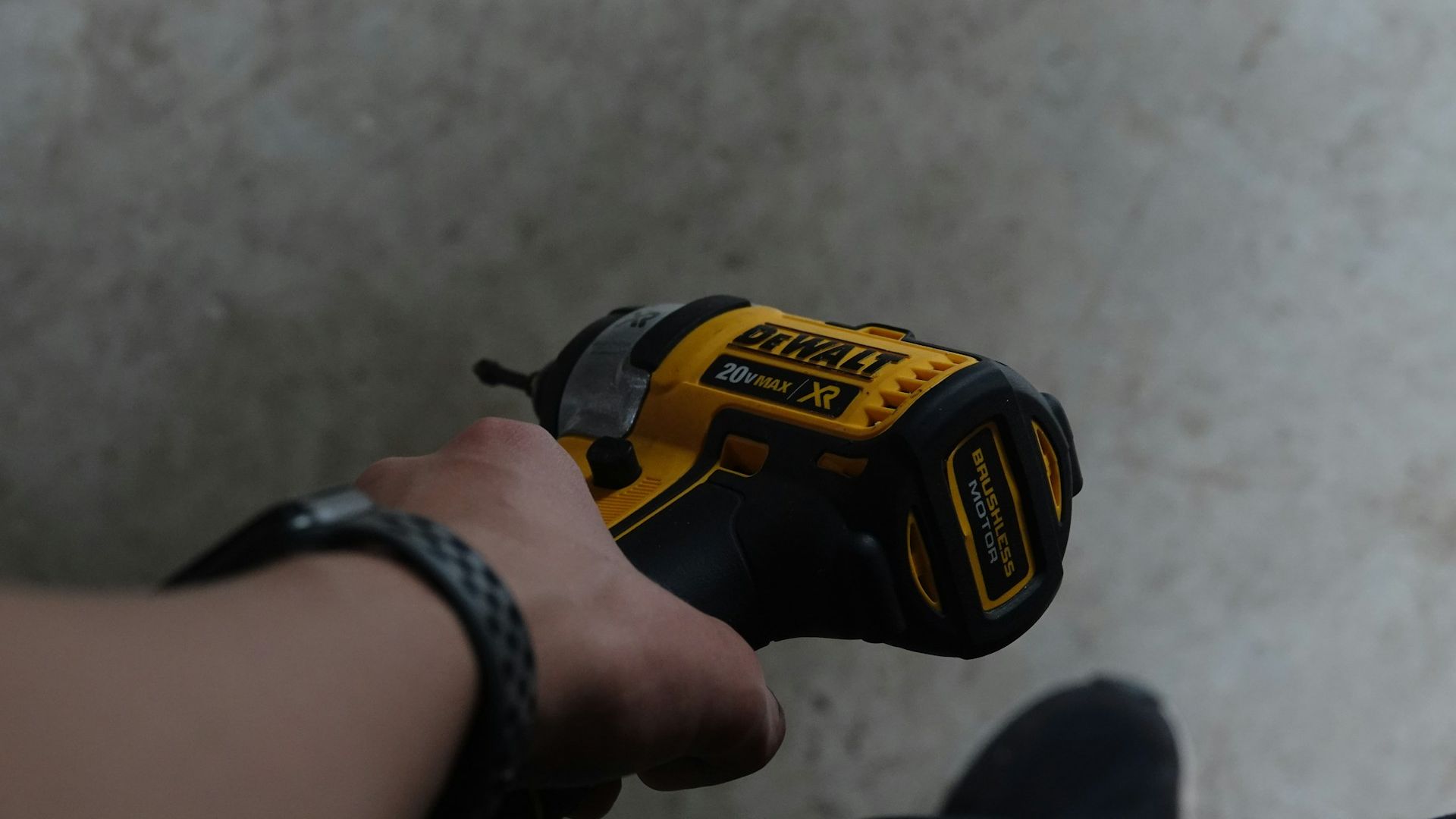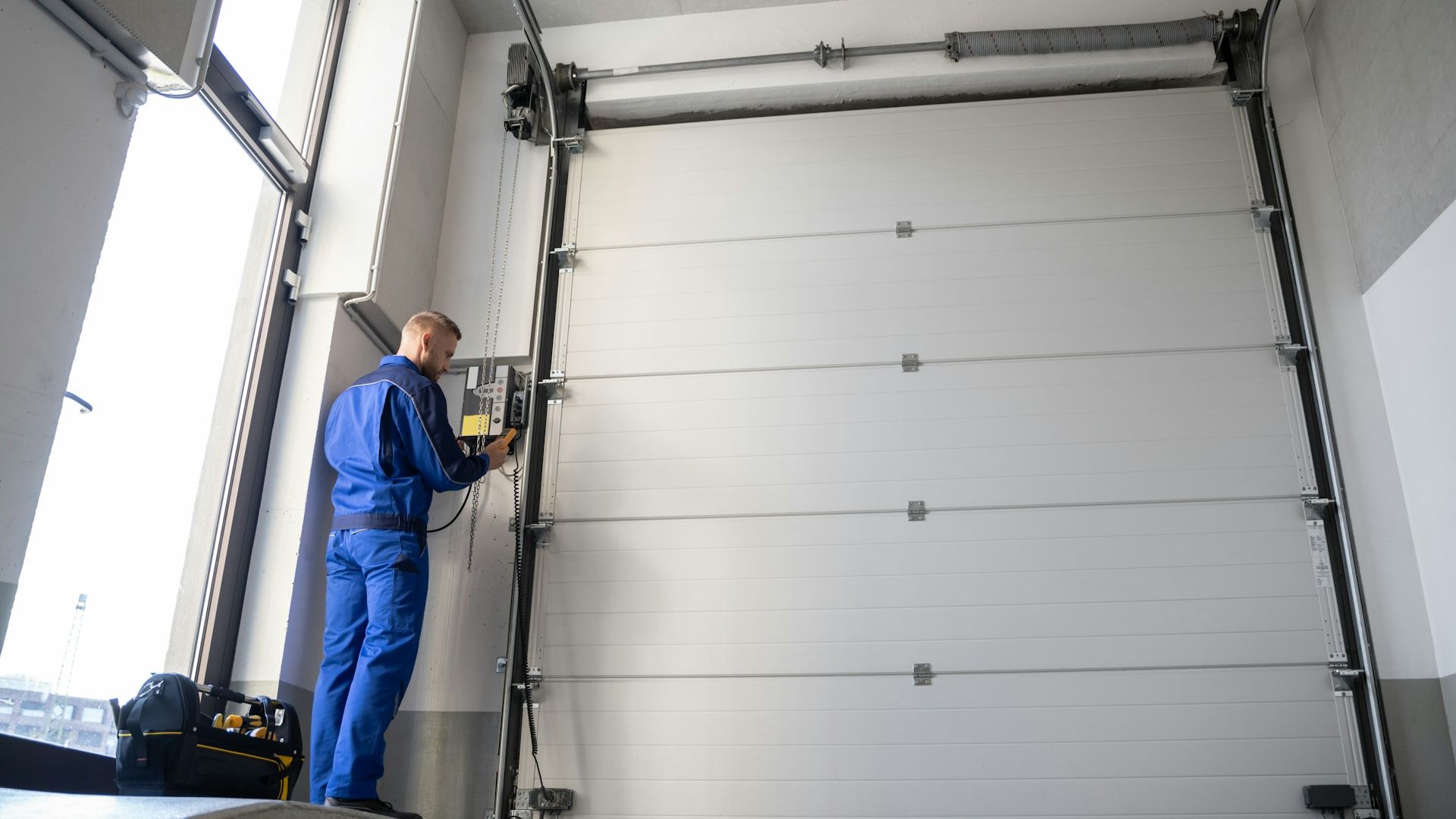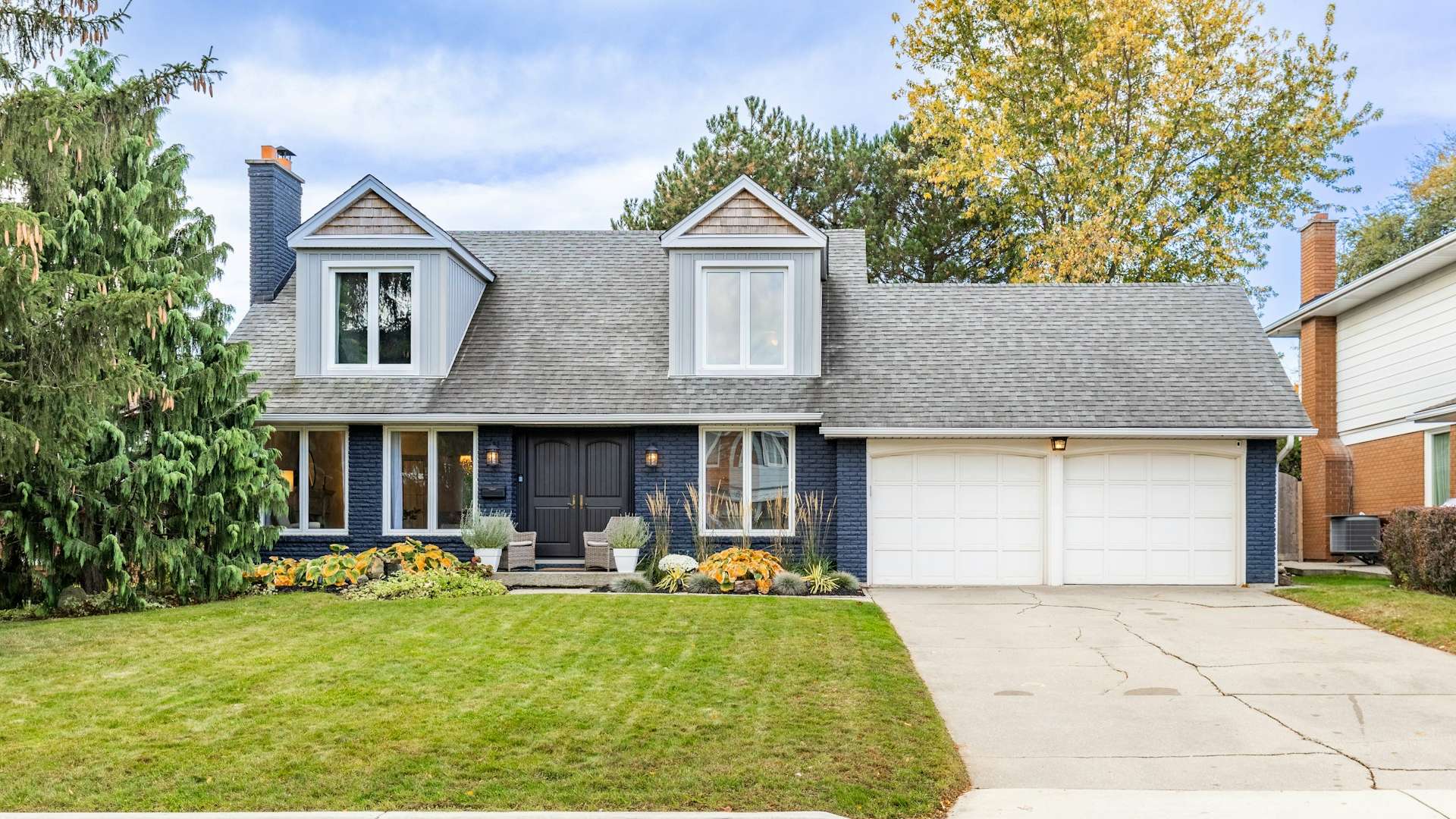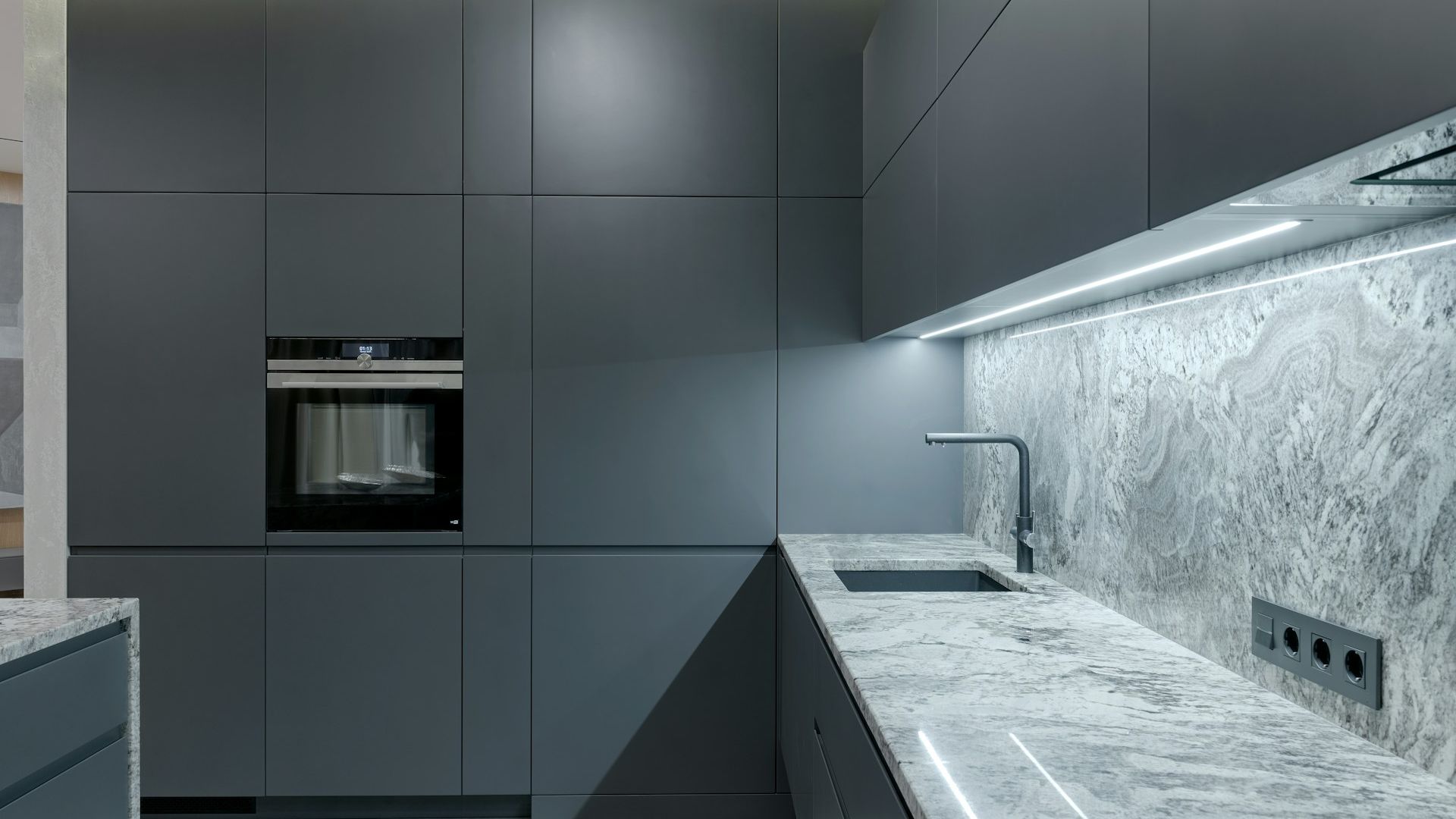Kitchen counter depth: Find the ideal measurement for your space
Discover the perfect kitchen counter depth for your space. Learn how the right depth enhances functionality, design, and even boosts your home’s resale value.

The ideal kitchen counter depth directly impacts how comfortable and functional your kitchen feels. When the depth is right, it creates a smooth workflow, keeps your kitchen balanced and inviting, and increases your home’s appeal to future buyers.
With so much importance placed on it, which kitchen countertop depth is regarded as ideal?
In this article, we will discuss the recommended depth of kitchen counters, explain why it matters, and walk you through the factors influencing countertop measurements.
What is kitchen counter depth?
Kitchen counter depth is the distance from the back wall to the front edge of the countertop. The correct depth is essential for how the kitchen works and looks. A counter that's too shallow will not give you enough space to prep meals or fit common kitchen appliances like coffee makers or blenders. On the other hand, if the counter is too deep, you will have trouble reaching the back of the counter, and the kitchen will feel crowded or awkward.
Getting the depth wrong can hurt the flow and feel of the space, making it feel bulky or cramped. It can also throw off the overall design, limit potential buyers, and affect resale value.
Standard kitchen counter depth
What is the depth of a kitchen counter? The standard kitchen counter depth ranges from 25 inches to 25.5 inches. This includes the 24-inch-deep base cabinet and an extra 1 to 1.5 inches countertop overhang at the front. This depth is essential because it fits well with most kitchen layouts and appliances and provides enough space for preparing food. At the same time, it keeps the counter from sticking out too far, which could make the kitchen feel crowded or complicated to move around in.
Average kitchen counter depth
As we explained earlier, the average kitchen counter depth in most residential homes is typically 25 inches to 25.5 inches, which includes a 24-inch-deep base cabinet and an additional 1 to 1.5 inches of overhang at the front. Comparatively, commercial kitchens have deeper counters, usually 28 to 30 inches, to handle larger equipment, heavier use, and multiple cooks working at once.
Commercial kitchen countertops prioritize function and efficiency over comfort, making the surfaces broader and more industrial.
While the standard counter depth of 25 inches to 25.5 inches works for most homes, there are certain situations where a different depth is more practical. For example, a shallower countertop, around 22 to 24 inches, is sometimes used in galley kitchens or areas with limited floor space. On the other hand, deeper counters of 27 inches or more are preferred in kitchens where larger appliances are used regularly or where extra prep space is needed.
Factors influencing kitchen countertop depth
Although there is a standard countertop depth that works well in most homes, it doesn’t always fit everyone’s needs. Several factors can affect your kitchen countertop's depth, especially when designing a functional and comfortable space.
Elbow height and countertop purpose
How the countertop lines up with your elbow affects how comfortable it is for different tasks. For general food preparation, it’s best if the countertop sits 3 to 4 inches below your elbow height. This position allows your arms to work without strain.
If the counter is used mainly for cooking, a slightly lower height of 5 to 6 inches below your elbow gives you more room to move your arms freely. The ideal height for kneading dough and rolling out pastry is about 8 inches below your elbow. It lets you use your upper body weight to press down, making the task easier and more efficient.
The size of kitchen appliances
Your countertop depth should work well with your kitchen appliances. Most base cabinets are 24 inches deep, and appliances like dishwashers, ovens, and refrigerators are made to match that size. However, some appliances, especially high-end or commercial-style models, can be deeper. If your counter is too shallow, the front of the appliance will stick out and break the clean line of your cabinetry. On the other hand, if the counter is too deep, there might be a gap behind the appliance, making it look poorly fitted.
The kitchen layout
In open-concept kitchens, you have more space to work with, so a slightly deeper counter can offer extra room for food prep or entertaining. A deeper surface also allows for seating, making the kitchen more social and functional. However, in compact kitchens, deeper countertops will make the room feel tight and hard to move around in. Sticking to the standard depth or going slightly shallower can help maintain good flow and allow more walking space.
Ergonomics and physical needs
People are built differently, so countertop depth should factor in who uses the kitchen most often. Taller people benefit from deeper and slightly higher counters to avoid bending forward too much. On the other hand, shorter people will find it easier to use shallower counters where they can reach the back without straining.
Customizing countertop depth and height is even more critical for people with disabilities or limited mobility. Someone in a wheelchair needs a lower surface with enough legroom space underneath to easily access appliances, cabinets, and cooking tools without difficulty. In these cases, thoughtful design makes the kitchen more accessible, safer, and enjoyable daily.
Kitchen island countertop depth
Most standard kitchen island countertops are about 27 to 28 inches deep. This gives you more space than a regular countertop, and the extra inches are useful for meal prep or placing larger kitchen appliances like stand mixers, blenders, or food processors without feeling cramped.
However, if your island includes a breakfast bar, seating area, or storage space, the countertop will be over 30 inches. This extra depth allows enough room for a comfortable overhang where people can sit without their knees bumping into the cabinet underneath.
Choosing the right countertop depth for your kitchen
The typical kitchen counter depth depends on your personal needs, space, and how you plan to use the kitchen daily. If you cook often or prepare multiple meals at once, you’ll benefit from deeper counters that offer more space to prep meals and serve them without feeling crowded. On the other hand, if you only do light cooking or have a minimalist kitchen setup, the standard 25 to 25.5 inches of depth might be all you need.
The size and layout of your kitchen also play a significant role. In smaller or galley-style kitchens, sticking with the standard depth helps preserve walkways and prevents the space from feeling cramped. However, if your kitchen is open or has an island, you can go deeper without compromising movement or flow.
Another critical factor is how the depth supports your comfort. Counters that are too shallow can force you to work with your elbows hanging off, while counters that are too deep might make it hard to reach the backsplash or upper cabinets, especially for shorter people. That’s why finding a depth that matches your physical comfort and kitchen habits is key.
Exceptions to standard kitchen counter depth
There are certain situations where custom depths make more sense. For example, a custom kitchen island might be 30 inches or more to create a bold centerpiece with more prep space, built-in storage, and seating on one side. In these cases, the counter becomes a statement piece that reflects personal style and how the kitchen is used.
In other cases, countertop depth is adjusted for accessibility. For people who use a wheelchair or have limited mobility, a shallower depth of 24 inches helps ensure that sinks, cooktops, or prep areas are within comfortable reach with adequate knee clearance underneath.
Key takeaways for selecting the right countertop depth
Choosing the right countertop depth might seem like a small detail, but it significantly affects how comfortable, functional, and enjoyable your kitchen will be. Think about how you use your kitchen. Do you cook every day? Do you bake a lot? Do you need space for large appliances? If you do all of this, you might prefer deeper countertops to give you more room to spread out.
Conversely, if your kitchen is smaller or you prioritize easy movement, shallower countertops might work better. Finding the right depth balances practical needs with the kitchen's appearance and flow.
Book a top-rated cleaner in 3 easy steps


Top-rated cleaners
Pick from a big range of cleaners. All are certified, background-checked, and ready for you to browse.

Affordable rates
Cleaners on Homeaglow are competing for your business. They offer sharper prices than you'll find anywhere else.

Easy, online booking
Easily rebook the same great cleaner, or try another. Homeaglow gives you direct contact with your cleaner.
Reclaim your time and give yourself the clean home you’ll love










